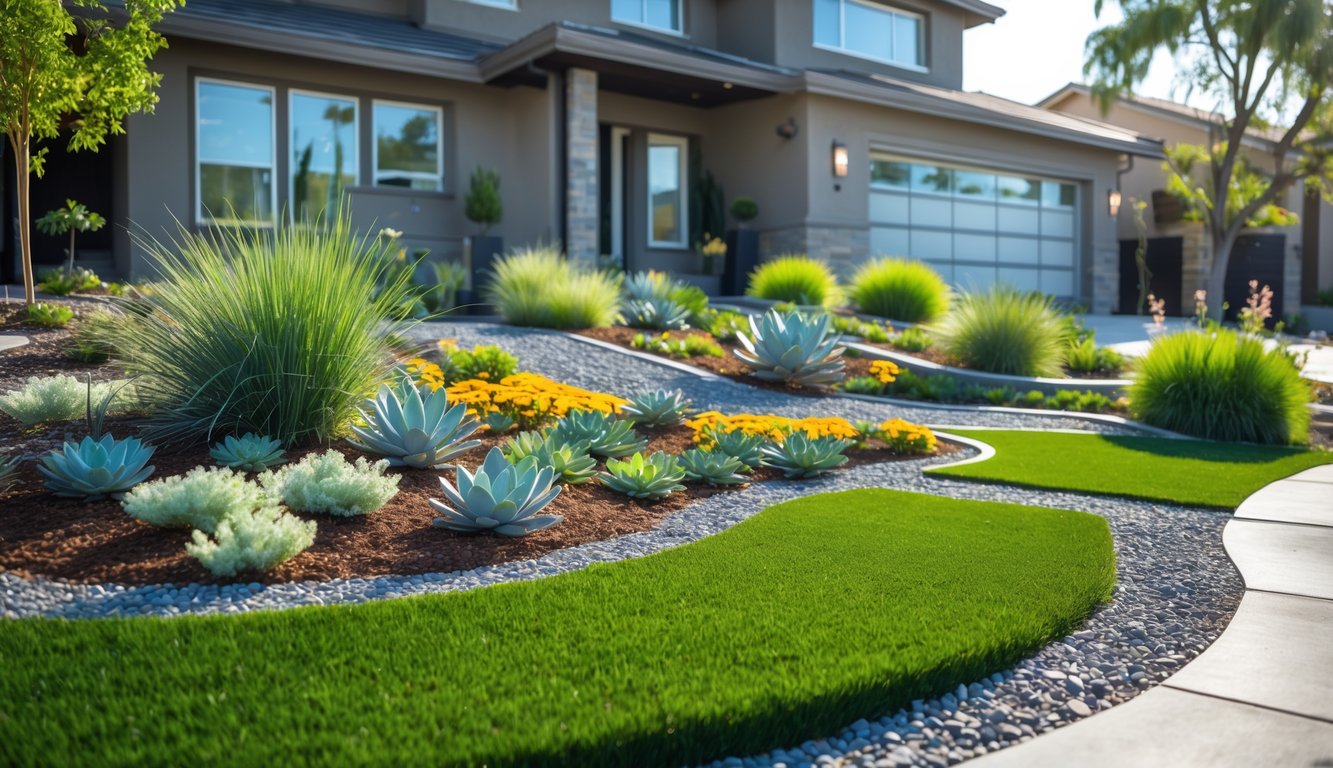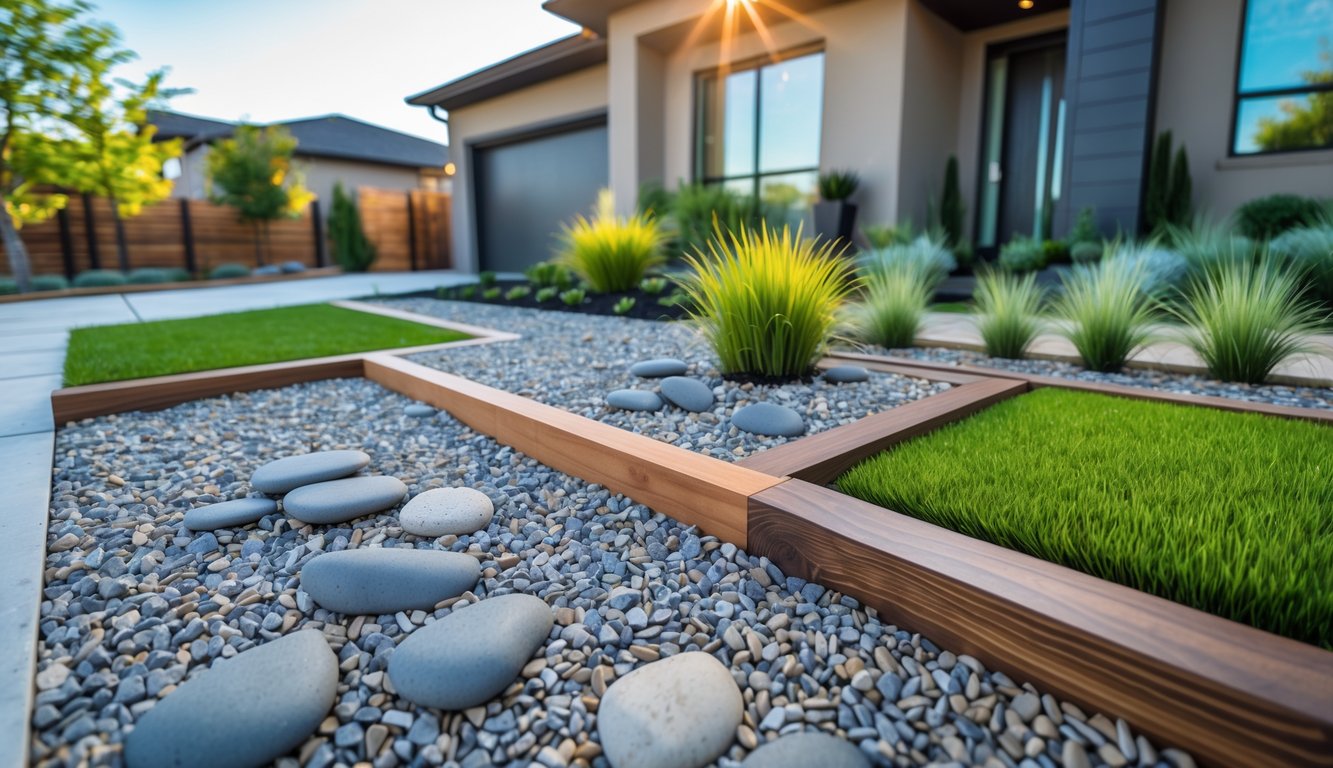
Eco-Friendly and Sustainable Landscaping Ideas
I’m out back dumping peat moss and arguing with dandelions. Everyone acts like “low-maintenance” lawns mean “no chores ever,” but that’s a joke, right? Mixing up sustainable stuff sometimes helps—lower bills, happier bugs, but my neighbors still count how many “weeds” I let live. Passive-aggressive, but whatever.
Native Plants and Biodiversity
Buying “native” plants felt like a trend at first, but apparently, their roots go deep and cost less. I threw in Echinacea purpurea and little bluestem—these are the blue-collar workers of the plant world. Ignore them, they still fix your soil. Unless you’re in some wasteland where nothing grows. The sustainable landscaping folks say ditch the imports and just plant what grows locally.
First year, I got more birds, actual fireflies, and way fewer aphids. If you stop mowing a patch and let yarrow and sedges do their thing, biodiversity just happens. There’s this stat—one wildflower patch can support dozens of insect species, no pesticides needed. Plus, these plants skip irrigation once they’re settled. Wish someone warned my water bill last July.
Buying seeds from local conservation groups works better than big-box stuff. Extension offices have PDFs on what works in your dirt, and things might look messy, but nobody’s rude enough to call it “weeds” when it’s “pollinator habitat.”
Pollinator-Friendly Lawns
Clover. My cousin turned his backyard into a Dutch white clover field—totally legal, and bees love it. Garden experts say clover fixes nitrogen, so you skip fertilizer, and it stays green in drought. I mixed in creeping thyme, which smelled weird in the heat, but no regrets.
Daylilies and violets? Monarchs and swallowtails show up. Landscape designers claim if you combine pollinator plants and mow less, you get more bugs and fewer HOA letters (sometimes). I tried it, looked patchy at first, but more butterflies showed up. Kids next door stopped squashing bugs. That’s a win.
Avoiding chemicals? Ground covers like self-heal (Prunella vulgaris) fix the soil, and every organic blog swears by it. Mulch these with shredded leaves and you’ll get more habitats. Maybe even see mason bees if you’re lucky.
Using Organic Mulch and Compost
Don’t buy bagged wood chips just because they’re on sale—unless you want termites. Mulch with grass clippings (skip it if you sprayed chemicals), leaves, or DIY compost from kitchen scraps. That’s what actually feeds native plants.
A local arborist told me: two inches of organic mulch keeps weeds down and moisture in, but go deeper and nothing breathes. Compost boosts your soil’s water-holding, and if you spread it thin in spring, perennials explode (in a good way).
It’s slow, though. Compost piles get gross, sometimes sprout tomatoes in November (don’t ask), and never look tidy. But real talk: my soil test jumped two grades in organic matter after three years of tossing everything in the pile. Every landscape pro I’ve met is obsessed with compost, so maybe that’s the only universal truth in eco-gardening.
Non-Living Lawn Alternatives: Gravel, Mulch, and More

I never know if I’m wasting effort or skipping some secret step the HOA expects. Rocks, bark, cement—they don’t care if you know what you’re doing. They don’t wilt, which is more than I can say for anything else I plant.
Rock Gardens and Gravel Landscaping
Seriously, more people are ditching lawns for gravel than ever. But weeds? They poke through unless you put down barrier cloth, and nobody warns you it’ll eventually rip. I found out the hard way—my “maintenance free” gravel patch turned into a mess.
If I had to guess, landscape designers (not my neighbor) push pea gravel or decomposed granite for dog runs—less mud. Some people obsess over drainage: gravel wins, water disappears, no puddles. The Spruce says pea gravel and crushed gravel outlast everything, no mowing, no fertilizer. You’d think people would try that before buying another bag of seed.
Mulch Choices
Bark, wood chips—so many types I can’t keep up. Dyed, shredded, cedar, whatever. Sometimes I think mulch is just brown confetti. Arborists rave about free mulch from chip-drop programs, but you might get bonus weed seeds. Not every pro warns you.
Supposedly, mulch blocks grass and keeps water in, but dry spells still chew through it, and mushrooms pop up everywhere. Still, compared to watering a lawn, dumping three inches of bark is way cheaper and keeps roots happy—just don’t pile it against your house unless you want a termite circus.
Patios and Decks
Ever actually compare the cost of tossing in a pressure-treated wood deck versus just pouring a concrete pad? I swear, the price swings are ridiculous until you see the quotes in black and white. I’ve heard real estate agents rave about patios bumping up home values, but, honestly, unless you’re throwing backyard ragers, I’m not buying it.
Composite decks? No splinters, even after baking in the sun for years. But, uh, check those warranties—nothing like watching your “weatherproof” deck turn weirdly pink after two summers and realizing the fine print’s not on your side. Still, once you ditch grass, suddenly you’re not mowing, and there’s room for way more outdoor junk. Real Homes keeps pushing plants, gravel, rocks, and mulch as “low-maintenance”—which, sure, but only a real deck means no mud, no weeds, and you can actually see which muddy paw prints came from which dog. I mean, that’s worth something, right?